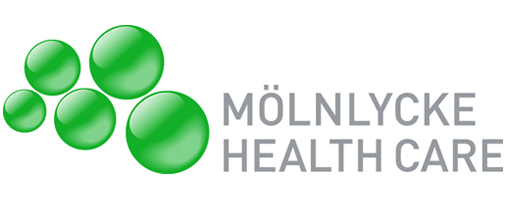Team:Chalmers-Gothenburg/Safety page
From 2012.igem.org
m |
m |
||
| Line 57: | Line 57: | ||
<div align="justify" style="width:auto; margin-left:0px; margin-right:300px;"> | <div align="justify" style="width:auto; margin-left:0px; margin-right:300px;"> | ||
__NOEDITSECTION__ | __NOEDITSECTION__ | ||
| - | + | ='''Safety questions'''= | |
'''General''' | '''General''' | ||
Latest revision as of 19:23, 26 September 2012
Safety questions
General
As in every lab there are harmful chemicals which pose potential risks to humans and/or the environment. Safety is therefore always a primary concern in every lab. We in the Chalmers iGEM 2012 team have been educated by two of the lab engineers in the safety routines of the sysbio lab here at the department of Chemical and Biological engineering. The lab code such as wearing lab coat, gloves and protection glasses is continuously implemented during our work in the sysbio lab. When harmful substances are used, the exposure is reduced by use of a fume hood. We have also written risk declarations for all experiments that have been carried out during the summer.
Would any of your project ideas raise safety issues in terms of:
- researcher safety
- environmental safety, or
- public safety?
Researchers
In this project we are working with organisms that are commonly used in laboratories, such as the Escherichia Coli and Saccharomyces cerevisiae, whereof the latter is generally regarded as safe. Some chemicals used in the project might be regarded as hazardous such as the hCG hormone, indole, GelRED staining, EDTA and SDS etc. The last three are commonly used in a life science lab and therefore standard risk protocols have been followed when handling these.
Special for this project is the use of hCG, a hormone present in the human body during pregnancy. The hormone poses a potential hazardous biological risk and has an irritating effect when getting in contact with skin, eyes and after inhalation. In order to decrease the exposure risk, all work when handling the lyophilized hCG powder, has been performed using particulate masks and safety glasses. Since we are working with low doses and only a few times (when we test if our biosensor works), the risk to be affected in any way by the hormone is low. In addition, all liquid and solid hCG waste will be collected in special waste containers and will be collected by a recycling company.
Another chemical that ist used during this project is indole. Indole is not commonly used during laboratory work in a life science lab. The substance is toxic in contact with skin, causes serious eye damage and is harmful when swallowed. During the experiments when indole was used we always worked in a fume hood, wore safety glasses and masks. All indole waste was collected in special waste containers and taken care of by a recycling company.
Environment
As always when working with genetically engineered organisms, there is a risk that the organism accidentally will be released into the environment. However, we utilize some very common lab strains when doing our genetic modifications, and these have a low survival rate outside the lab. Also, when working in the laboratory, we have adapted the standard laboratory precautions of collecting all biological waste to prevent the release of genetically modified organisms.
The environmental risk of releasing our genetically modified strains into the environment is mainly connected to the antibiotic resistance genes they are carrying. Our yeast strain composing the final construct has the kanamycin resistance gene integrated into its chromosomal DNA and it also carries two plasmids with the ampicillin resistance gene. When considering environmental risks, the worst case scenario would be that this yeast strain will be released into the environment where it survives and hence will be able to spread its resistance genes. The risk of releasing the strain into the environment is minimized by following protocols regarding antiseptic working environment and sterilization of organic waste. In addition, as mentioned, our strain is derived from a common lab strain and this strain will have a hard time surviving outside the laboratory since it has been adapted for laboratory use. Therefore, we consider this environmental risk to be relatively low.
Our yeast strain also carries genes that should enable indigo production. Indole, one of the intermediates during indigo synthesis is toxic. Hence, another worst case scenario when considering environmental risks would be that our yeast strain actually produces this intermediate and releases it into the environment. However, as already stated, it is unlikely that the yeast will survive outside of the lab and it will also most likely lose its plasmid with the indigo-synthesizing genes when the selection pressure is gone. It is also quite unlikely that our yeast will produce the intermediate in such large amounts that it would be hazardous for the environment.
The public
Our device does not, in a finished state, pose a risk for the public or users. The risk connected to the project is mainly due to the laboratory work i.e. chemicals, verification procedure with hCG or indole. As the product is designed right now, it would not be released into the market and hence not be available for the public. Our current device does therefore not pose any safety risk to the public either.
If the yeast strain that we have developed would be turned into a commercial product, all gene modifications would be done in the chromosomal DNA and hence, the strain would not contain any genes for ampicillin. Also, the kanamycin resistance gene will have been deleted by using its flanking loxP sites.
Do any of the new BioBrick parts (or devices) that you made this year raise any safety issues?
None of the Bricks separately or as a system can be viewed as a threat to the security and community.
Is there a local biosafety group, committee, or review board at your institution?
No, when working with synthetic biology at Chalmers we follow regulations set up by the Swedish Work Environment Authority. They set up protocols on how chemicals and genetically modified material should be treated and sets requirements for the working environment.
 "
"






